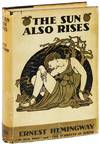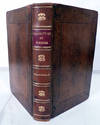
Forman, Harrison (1904-1978). Collection of Fifty-Five Mainly Ethnographic Original Gelatin Silver Photographs, Taken During Forman's Expedition to Tibet and Inner Mongolia in 1932 and Showing Tibetan Lamas, Sorcerers, Warriors, Elders, a “Chief of Lama Police,” “Printing Block Carvers,” Women and Girls, Labrang Monastery, “Yak-Hair Tents,” a “Mongol Temple City in the Ordos Desert near Ninghsia,” Mongolian Lamas, Girls, Yurts, &c. Ca. 1930s.
by Forman, Harrison (1904-1978)
- Used
- Condition
- See description
- Seller
-
San Francisco, California, United States
Payment Methods Accepted
About This Item
55 loose gelatin silver photographs; including a large photo ca. 19,5x25 cm (7 ¾ x 9 ¾ in) and over twenty photos from ca. 12,5x17,5 cm (5x7 in) to ca. 10x15 cm (4x6 in); the rest of the photos are from ca. 9x14 cm (3 ¾ x 5 ½ in) to ca. 5,5x5,5 cm (2 ¼ x 2 ¼ in). Over forty photos with period pencil, ink or typewritten captions on verso; over twenty photos with typewritten or ink-stamped copyright: “Harrison Forman, Twin Lakes Village, South Salem, N. York,” “Harrison Forman World Photos, 500 Fifth Avenue (at 42nd St.), New York,” “Harrison Forman World Travel Inc.,” “Harrison Forman, price $5.00 for publication,” “Harrison Forman, The Explorers Club,” or “Harrison Forman, 6 Colby Rd., Port Washington, Long Island, New York.” Two photos are dated “1932” in pencil on verso. Several photos with minor creases or loss of corners, a couple of photos mildly faded, but overall a very good collection rare interesting photos.
Historically significant extensive collection of original ethnographic photos by noted American traveller, photographer, journalist and writer Harrison Forman, taken during his 1932 trip to the Tibetan Plateau and the upper reaches of the Yellow River. The purpose of the trip was to explore the region around Amne Machin – the “Mystery Mountain <…> located somewhere near the headwaters of the Yellow River in northeastern Tibet, [which] had been twice reported as being possibly higher than Mt. Everest, the highest peak in the world” (Through Forbidden Tibet, p. viii). Forman crossed the northeastern part of the Tibetan Plateau, mostly in the modern-day Quingai province of China, visiting several Tibetan Buddhist monasteries and lamaseries (Labrang Gomba, Tso Rri Gomba, Drukh Kurr Gomba), interviewing their leaders and taking part in religious ceremonies. Having crossed the upper Yellow River near the Radja Gomba monastery, Forman approached the Amne Machin as far as Shakh Lung valley and Amnyi Geto mountain pass but had to turn back due to skirmishes with local Golok warriors. His travel account “Through Forbidden Tibet” was published in 1935 (New York-Toronto: Longman, Green & Co.).
Our collection includes thirty-nine photos of people and settlements of the Tibetan Plateau, including nine images published as illustrations in “Through Forbidden Tibet.” The published photos portray local women (detailing on their costumes and hairdos, see pp. 18-19 and 145 in the books), “printing block carvers” from Labrang Monastery (pp. 96 and 97), “nukhwas” or medicine men (p. 128), a daughter of a Tibetan chieftain named “Drolma” (pp. 176-177), and show celebration of the “Quiver of the Gods” on the Kawa Lal plateau (p. 112). Two more photos, showing people turning praying wheels inside the Labrang monastery and a group of printing block carvers, were evidently taken at the same time as the ones published in the book (pp. 31, 96-97).
The other “Tibetan” photos include vibrant portraits of native people – men, warriors armed with rifles, elders smoking pipes, “a high lama in his costly ceremonial robes,” “Chief of Lama Police at Kum Bum Monastery (Northeastern Tibet),” a pilgrim prostrating at the entrance to a shrine, women making hairdos with traditional 108 braids, and “Tibetan Buddhist monks in Lamasery – Peking.” There are also views of a street in Lhasa, “Buddhist Monastery, Jehol province, China (Putuo Zongcheng Temple near Chengde/Jehol, Hebei province), traditional Tibetan “yak-hair tents,” saddled yaks, containers for butter made of sheep stomachs, etc. A large photo shows an exposition with Forman’s portraits of Tibetans and Tibetan works of art and artifacts.
Eleven photos of Inner Mongolia, taken on the way to or from the Tibetan Plateau, include a birds-eye view of a “Mongol Temple City in the Ordos Desert near Ninghsia, 1932” and the following portraits and scenes: “a Mongol woman with milk to be churned to butter;” “a Mongolian girl” mounted on a horse; “Mongol women, Inner Mongolia;” an ornate wall with Buddha statues in “Mongolia;” “Camels in an inn-yard. Camels travel at night and rest from the hot sun during the day;” “a Mongol girl in a native costume;” “Mongol Lamas in a chanting session. Like the Tibetans, one of every three males in Mongolia is a Lama, a Buddhist priest;” “framework for a nomad’s tent in Mongolia, it’s called a yurt;” “Mongols seated before a yurt. The yurt tent is made of a framework of latticed slats covered with squares of felt. It is quickly taken apart and set up again, and packs easily for travel.”
The collection also contains several portraits of Forman, taken in the 1930s in China and other locations, including photos with “my trusty camel in Mongolia/Tibet, 1932” and “Harrison Forman and the “Quiver of the Gods” at 16,000 feet above sea level in Tibet. 1932.”
Overall an interesting lively collection of original annotated photos of people and sites in the Tibetan Plateau and Inner Mongolia in the 1930s.
“Harrison Forman was born on June 15, 1904 in Milwaukee, Wisconsin. He attended the Layton School of Art and later the University of Wisconsin. There, he majored in Oriental Philosophy and graduated with a B.A. in 1929. Forman began his career training pilots and later sold military and commercial aircraft to the Chinese government. Throughout the 1930s, he made several expeditions through Tibet and later served as a war correspondent during the Second Sino-Japanese War. In that conflict, he covered incidents like the bombardment of Shanghai (1937) and the Japanese invasion of Indo-China (1940). Forman also travelled to Europe and was present for the 1939 Nazi invasion of Poland. This led to his work as a foreign correspondent for the New York Times and London Times during World War II. He mainly reported on the China War Theater and was also present for the Communist capture of Shanghai in 1949. Forman travelled to the Philippines, Afghanistan, Zimbabwe, Bolivia, and numerous other countries during the postwar period. His photography and writing about these journeys earned him the nickname the "Modern Marco Polo. "
Forman authored several books, including Through Forbidden Tibet (1935), Report from Red China (1945), and How to Make Money with Your Camera (1951). He also edited for magazines such as McCall's and True and wrote for titles like Life and Collier’s. For the 1937 movie Lost Horizon, he served as the film's technical director. In his later years, Forman started two businesses with his wife Sandra: Harrison Forman Travel, Inc., a travel agency, and Harrison Forman World Photos, a photograph supplier. In addition, he was affiliated with several organizations, including as a founding member of the American Society of Journalists and Authors, a lifetime member of the Explorers Club, and as a fellow of the American Geographical Society” (see more).
Reviews
(Log in or Create an Account first!)
Details
- Bookseller
- Globus Rare Books & Archives
(US)
- Bookseller's Inventory #
- P28
- Title
- Forman, Harrison (1904-1978). Collection of Fifty-Five Mainly Ethnographic Original Gelatin Silver Photographs, Taken During Forman's Expedition to Tibet and Inner Mongolia in 1932 and Showing Tibetan Lamas, Sorcerers, Warriors, Elders, a “Chief of Lama Police,” “Printing Block Carvers,” Women and Girls, Labrang Monastery, “Yak-Hair Tents,” a “Mongol Temple City in the Ordos Desert near Ninghsia,” Mongolian Lamas, Girls, Yurts, &c. Ca. 1930s.
- Author
- Forman, Harrison (1904-1978)
- Book Condition
- Used
- Keywords
- Photography, Asia, China, Central Asia, TIBETAN PLATEAU
Terms of Sale
Globus Rare Books & Archives
All items subject to prior sale. Payment accepted via credit card, Paypal, or domestic check drawn on a U.S. bank.
30 day return guarantee, with full refund including original shipping costs for up to 30 days after delivery if an item arrives misdescribed or damaged.About the Seller
Globus Rare Books & Archives
About Globus Rare Books & Archives
Globus Rare Books and Archives is the department within Globus Books that specializes in rare travel and exploration related items from around the world with an emphasis on the Americas, the Pacific and Russian explorers and travellers. Our goal is to seek out and offer rare and unique antiquarian items, including rare books, photographs, photo-albums, watercolors, drawings, manuscripts, archives, maps and prints.
Our team has many decades of experience helping to build many institutional and private collections across the USA and the world and we have seen and handled many important antiquarian items and collections.
We issue monthly catalogues with the newest acquisitions available for our subscribers.
We participate in many US and International antiquarian book fairs. Follow us on social media to receive the latest news and offers.
You can browse our collections in person during the shop's opening hours by appointment : Tuesday to Sunday, 11 to 5.
Glossary
Some terminology that may be used in this description includes:

